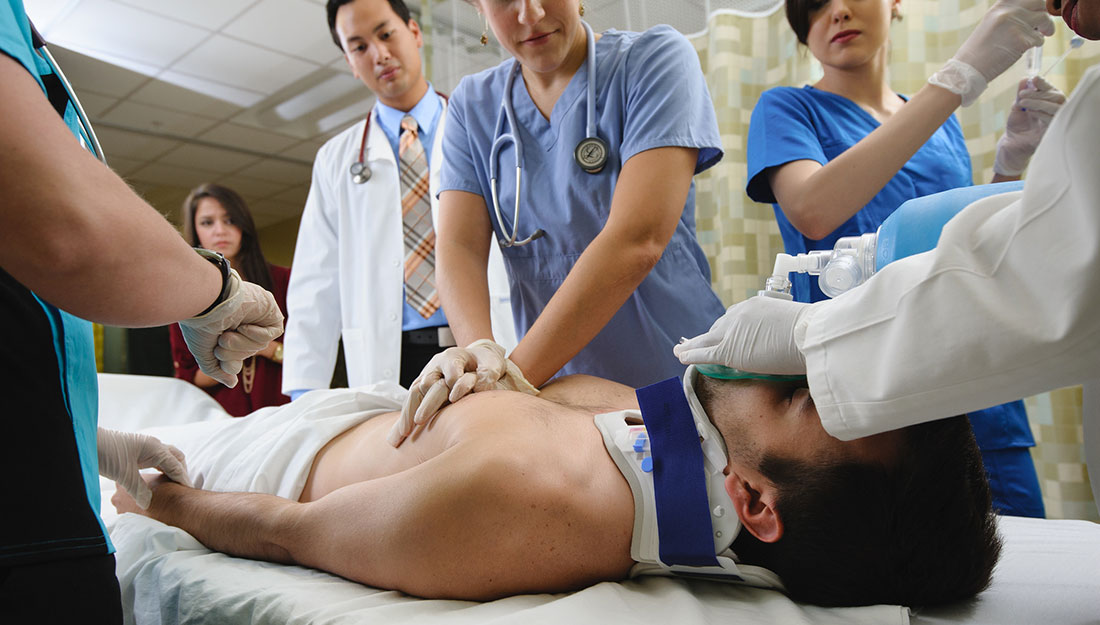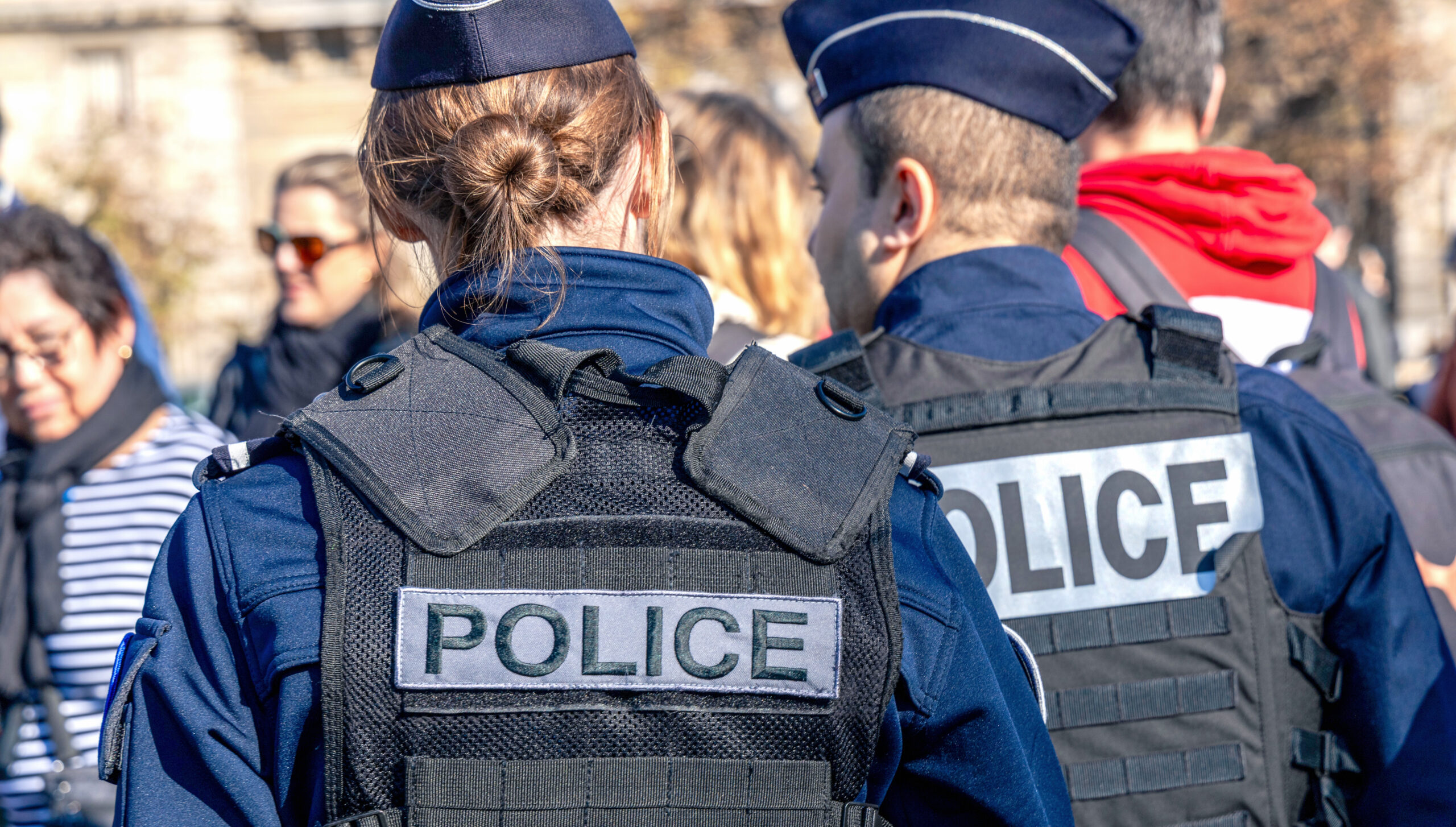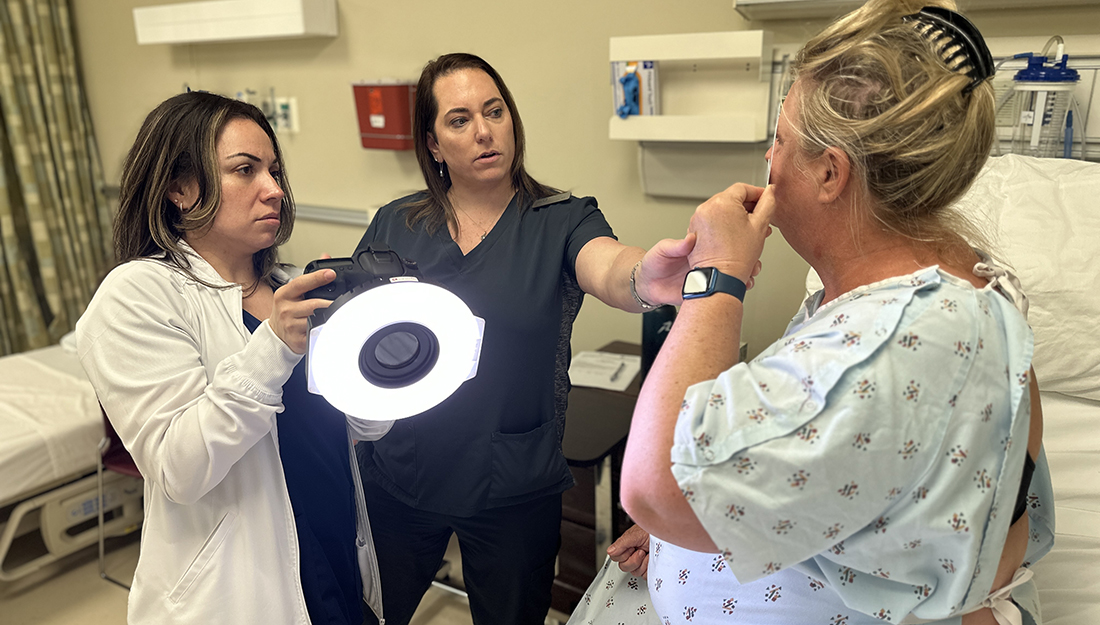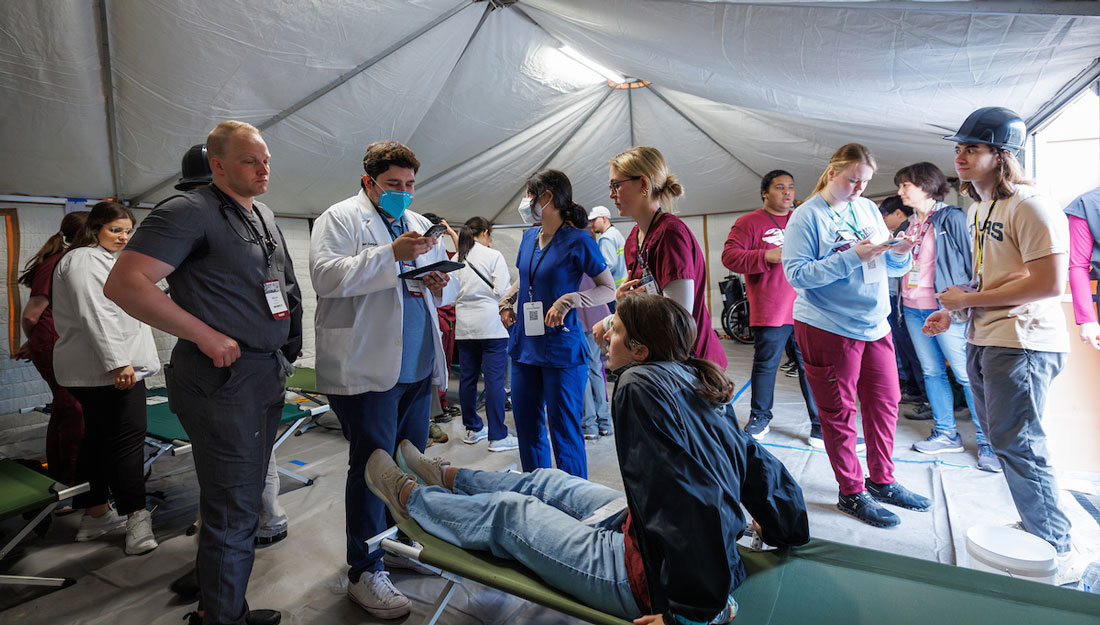Interprofessional education: More than learning together

Chances are that if you’ve been treated in a hospital lately, you’ve experienced the help of a health care team. Physicians, nurses, physician assistants and pharmacists probably all played a role in making sure you received the best possible outcome.
The Texas A&M Health Science Center is working to make sure its graduates are as well prepared as possible to work with each other – and won’t have to learn this team work, “on the fly,” when they reach the hospital setting. It’s an approach called Interprofessional Education (IPE)-where students from different professions learnwith, from and about each other. It’s more than just putting students from different professions in a room together, it’s a comprehensive approach to education.
The Health Science Center even has a 27,000-square-foot, realistic hospital setting with the latest tools and technology to enhance that learning. It’s called the Clinical Learning Resource Center (CLRC), and it’s a space for medical, pharmacy, public health, veterinary, and nursing students to interact with simulated patients and mannequins before entering a hospital setting with real patients, human and animal.
By moving beyond the profession-specific educational efforts, and engaging students through interactive learning with each other, students are prepped for the ever-changing health care landscape, a place where health care professionals will work increasingly in team settings.
The rising cost of health care and an increasingly precarious physician shortage (the Association for American Medical Colleges (AAMC) says the nation will face a shortage of between 46,000-90,000 physicians by 2025), is making the team approach not only best for the health care system, but best for the patient.
“While part of our student’s education occurs in the same room and same simulated experience, what we really want to do is change the way our graduates think about team medicine and how they approach and embrace the concept of the team approach,” said Regina Bentley, RN, EdD, CNE, associate dean for Academic Affairs and Accreditation at the College of Medicine.
“We’re also working to break down any stereotypes students have of other professions so they enter the workforce both ready and willing to work together,” Bentley stated. “Each of our academic programs have accreditation requirements for interprofessional collaboration. It is imperative that we educate our students in this manner.”
Bentley is uniquely suited to lead IPE efforts at the College of Medicine as she has been a registered nurse for forty years and an educator for 32 years. Currently, in collaboration with nursing, the medical students are receiving the Fundamental of TeamSTEPPS Training program of which Bentley and Jerry Livingston, RN, PhD, assistant professor, (also a nurse employed by the College of Medicine) are both Master Trainers. This is a well-researched evidenced based team training program which provides the students opportunity and knowledge of practicing in a team.
In a recent simulated scenario, nursing and medical students practiced IPE to deliver a healthy baby boy and reacted to the mother’s uterine hemorrhage that required an emergency hysterectomy.
“I’ve learned that every moment is filled with opportunity, and it’s what I do with those opportunities that define the outcome of my actions,” said Patty de Veyra, a nursing student in the class of ’16. “There was no barrier between the two professions, and they definitely made the team stronger.”
“The number one cause of sentinel events—ending in death or serious injury not related to the natural course of patient illness—is a lack of communication and leadership,” explained Shelley White-Corey, RNC, WHNP, a clinical assistant professor in the College of Nursing. “Study after study supports the conclusion that practicing as a team results in better communication, so we are really dedicating a great deal of effort to teach this correctly–because its more than a theory–we’re doing everything we can to save lives.”
The Institute of Medicine agrees, saying “it is clear that how care is delivered is as important as what care is delivered.” And that “developing effective teams and redesigned systems is critical to achieving care that is patient-centered, safer, timelier, and more effective, efficient, and equitable.”
It would seem like a pretty logical approach to medical education: teaching students together who will one day work together. But this hasn’t always been the case, and it’s more complex than just practicing scenarios together. IPE has often been defined as enhanced collaboration, where each professional’s contribution isequally valued.
Increased use of technology (simulations, web-based education, e-health), communities of practice, and funding initiatives for clinical education have helped expand the established use of IPE.
While IPE is becoming more and more common in the CLRC, Texas A&M also hosts one of the largest disaster simulations in the country. Aptly named “Disaster Day” this event brings together medical students, nursing students, pharmacy students and even students from the College of Veterinary Medicine and Biomedical Sciences. Also, Blinn College nursing and EMT students have participated. It is an event that not only serves as an excellent IPE training ground, but provides great data to improve IPE research.
The Texas A&M Health Science Center is now partnered with Baylor College of Medicine on a National Institutes for Health (NIH) grant. The intent of both schools is to transform curriculum to reflect an ideal balance in content among behavioral, biomedical and social sciences. Gaps in the behavioral and social sciences discovered the “hidden curriculum’s” significance, referring to the informal interactions among students, teachers and residents. Specific aims of the grant are related to IPE. Members of the grant from Texas A&M are from both the College of Medicine (Lori Graham, Ph.D., principle investigator and Courtney West, Ph.D., co-investigator) and from the College of Nursing (Karen Landry, Ph.D., co-investigator). The team created three instruments based on IPE competencies to evaluate team based collaborative care during the annual disaster day event and measure IPE communication, roles and responsibilities, values and ethics, teams and teamwork.
“The development of interprofessional education requires moving beyond these profession-specific educational efforts to engage students of different professions in interactive learning with each other,” West said. “Being able to work effectively as members of clinical teams while students is a fundamental part of that learning.”
The intention was to frame interventions as “relationship-centered,” where, rather than marginalize the hidden behavioral and social sciences, faculty are actively looking for constructive hidden curriculum that shapes the teacher-student, teacher-teacher, and student-student interactions. The model of the study now includes health professionals, other health care providers and public health. Both Baylor and Texas A&M have sought to discover strengths in each school’s efforts and to share those to benefit both institutions.
“In the end, we are doing this for the patient,” Bentley explained. “By starting with professionals’ education, the foundation are building through fundamentals, we are helping our graduates to give the best care possible to patients and improve the health care system.”
Media contact: media@tamu.edu


